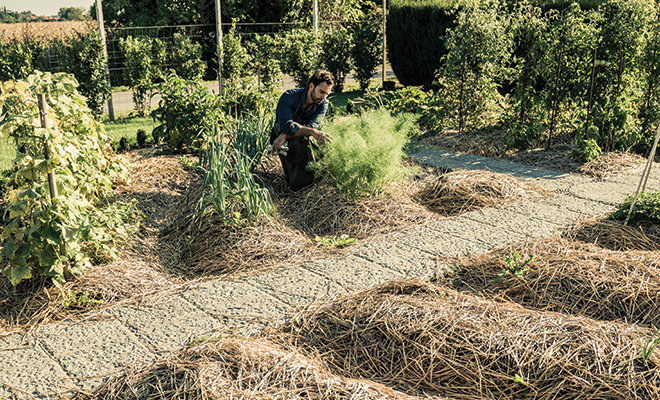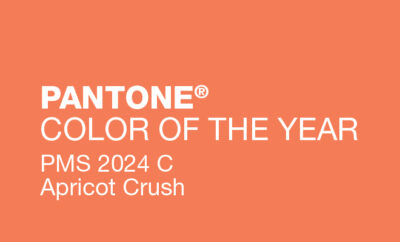
Bale Your Garden!
If you’ve always wanted a vegetable garden but you lack sunny gardening space or good soil, don’t despair. Straw bale gardening has become the newest gardening trend, with these accessible gardens sprouting up from the tropics to Alaska and from farm country to New York City. Universities and garden clubs across the country have websites and classes on how to grow your own vegetables using straw bales. Google “straw bale gardening” and you find hundreds of sites and articles.
Gardeners with bad soil, mold- or disease-infected soil or even those with no soil (think of bales on a concrete driveway or patio) can still grow lush vegetable gardens, and since the bales are tall, gardeners using walkers or wheelchairs can grow their own vegetables as well. The technique is similar to container or raised bed gardening, only better.
All you need is a sunny spot near a water source, and the only tools you’ll need are a hand trowel, a garden hose and a thermometer, such as a meat thermometer. A bale of any type of straw, except pine straw (do NOT use hay, which contains seeds) becomes a rich growing medium through composting, and the heat inside caused by composting can give the gardens a couple of weeks jumpstart, which is great in climates with shorter growing seasons. There’s little to no weeding, and if a few weeds do show up, simply trim then and they’ll be gone. If you follow directions, the method is easy and nearly foolproof. Here’s the how-to.
Purchase as many straw bales as you think you’ll need; they’re available at garden or farm stores for about $3 to $8 each. Place the bales with the cut end up and end-to-end anywhere they can get a lot of sun and near a water source such as an outdoor faucet. Leave the twine around the bales since it will keep the bale from falling apart later in the growing season. It’s vital to condition bales before you plant. Conditioning starts the composting process.
There are two main methods for conditioning the bales for planting, the short method and the long method. The short method needs only 12 days, but requires commercial fertilizer. The long method requires at least 45 to 60 days, but requires less effort.
The short method: Thoroughly water the bales on days 1 though 3 until water starts coming out of the bottom of the bale. On days 4 though 6, sprinkle the bales with about a half cup of high-nitrogen fast-release fertilizer. Look for a 34-0-0 or a 46-0-0 rating. The first number is the percentage of nitrogen, the second is phosphorous and the third, potassium. The first number should be 30 or higher. The last two numbers should be low. Avoid fertilizer containing weed killer. Follow all fertilizer applications with a good soaking.
On days 7 through 9, cut back the fertilizer to one-quarter cup. On day 10, apply 1 cup of 10-10-10 garden fertilizer. You may notice mushrooms growing on the bales. This is a good sign. They will disappear in a couple of weeks. Water the bales as needed through the growing season.
The long method: If you use the long method, simply set the bales in place at least 45 to 60 days before the first planting day. Soak the bales on days 1 through 3, then keep them moist until you are ready to plant. The bales will begin to compost. Once planted, continue to keep the bales moist. Don’t worry. You can’t overwater.
To plant seedlings: Wait to plant until your area’s last frost day has passed. Check the temperature of the bales with the thermometer. If it’s higher than 99º F, wait a day or two until it cools. With a hand trowel, make a hole large enough to comfortably fit the roots of your plant. Put a sterile planting mix into the hole, add your plant and top with a little more planting mix. (Do not use garden soil.) Water.
To plant seeds: Spread sterile planting mix across the top of the bale about 1 to 3 inches thick and plant your seeds according to packet instructions. Water the bales gently. Soaker hoses put in place before planting work well. Thin the plants if necessary and start planning for a bountiful harvest.
Follow plant spacing directions with both the seedlings and the seeds. Bales can generally support one or two tomato plants, climbing vines such as squash or melons, peppers or rows of vegetables such as kale, cabbage and cauliflower. You can plant herbs or flowers on the sides of the bales or potatoes underneath. If you grow vines or tall plants such as tomatoes, you will need to support them.
By the end of the growing season, the bales will be beginning to fall apart, perfect for composting. The potatoes you planted deep inside the bale will be ready for harvest, too.
Aren’t you ready for spring? Get your bales ready and plant!
Sources: grandmaraismichigan.com, lcweekly.com, minnesotafarmguide.com, pods.dasnr.okstate.edu and the experience of the writer.







